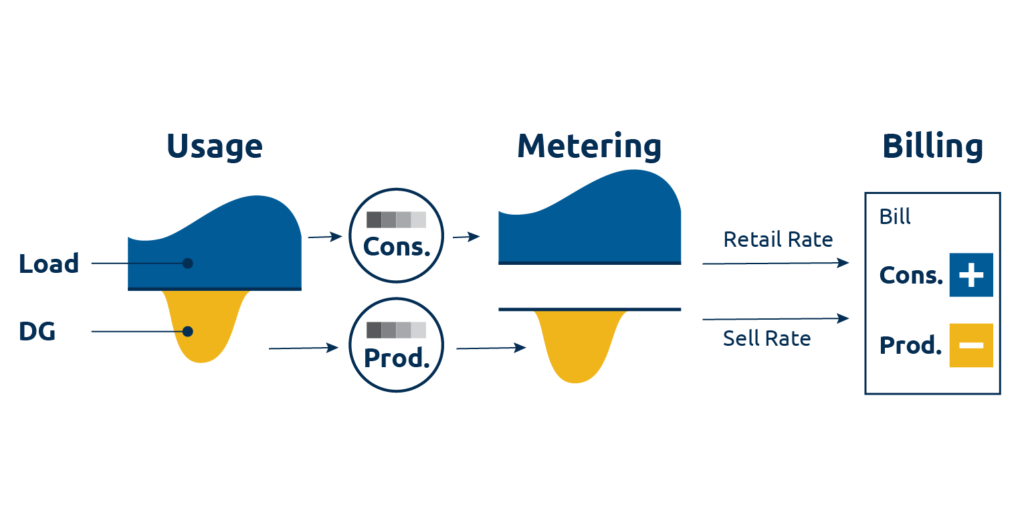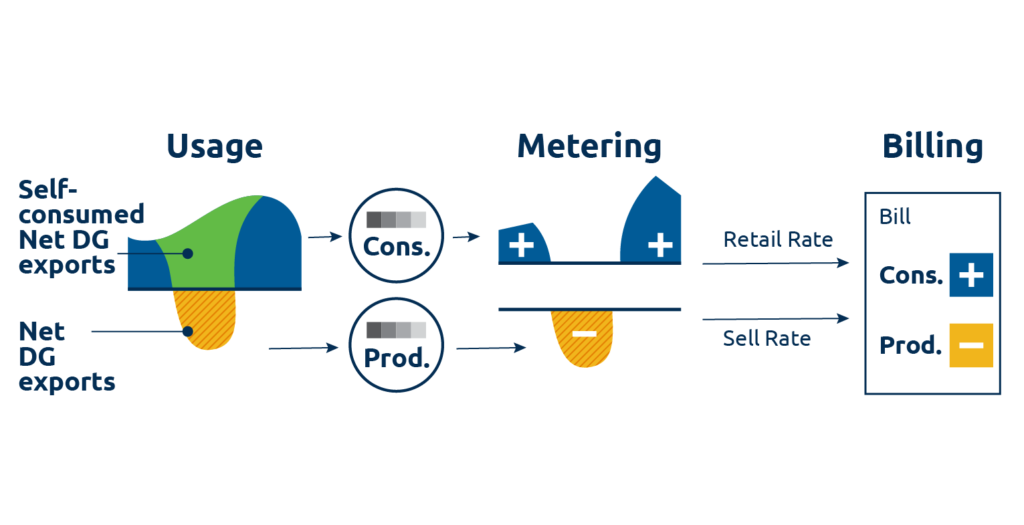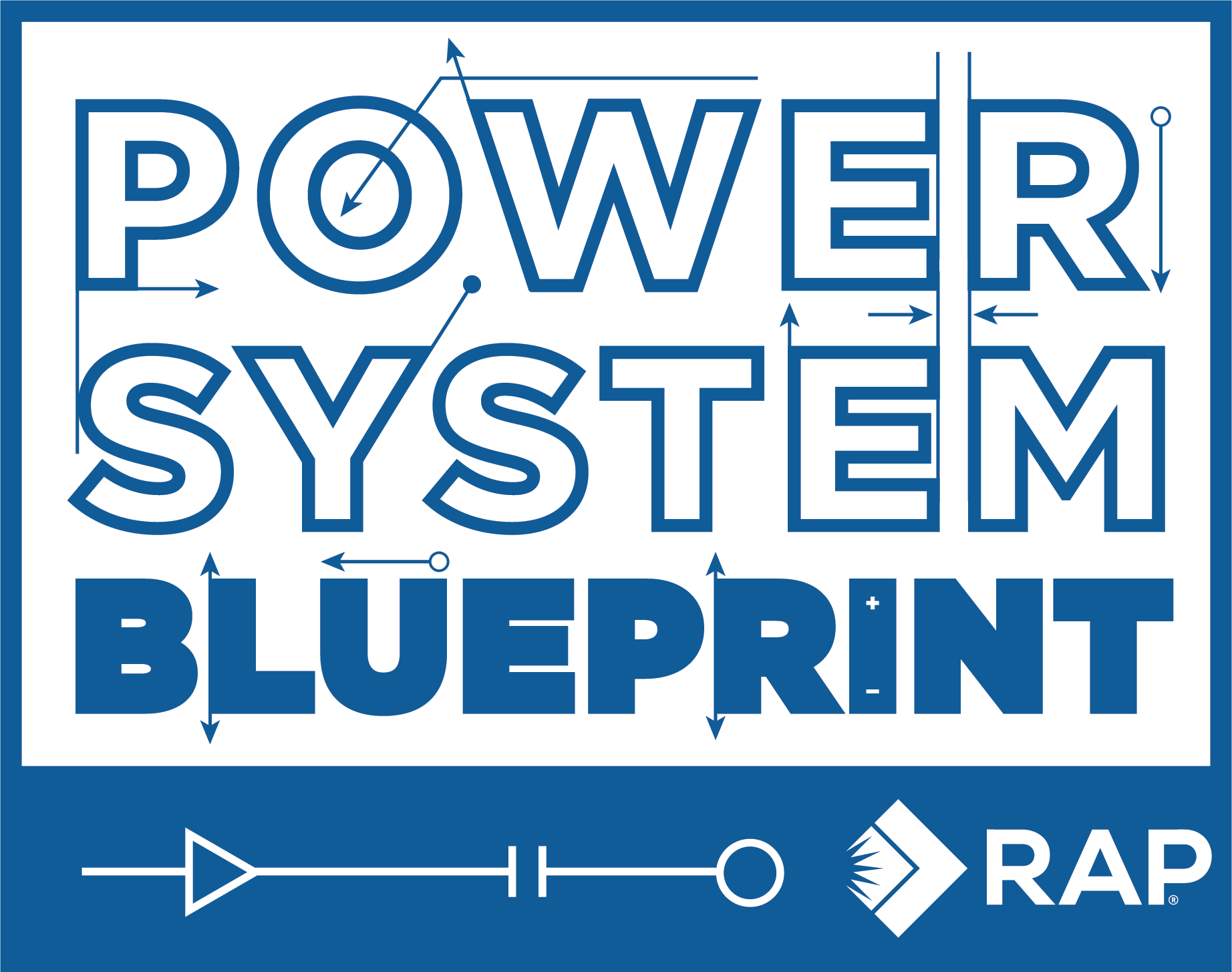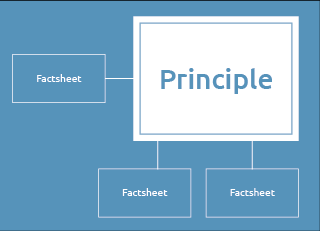SUMMARY
Net metering compensation schemes of distributed solar, small wind or battery storage were instrumental in kick starting those applications. As we move into broader deployment, it becomes important to appropriately account for the value these distributed energy resources (DERs) offer to the power system. Net billing or buy-all, sell-all schemes are identified as better, given the right regulatory and market conditions.
WHAT
Value-based remuneration of DER
HOW
Ensure separate metering of off-take and injection of power; decide on billing arrangement
WHO
Legislators and regulators
WHEN
By 2024 in EU
Compensation for electricity self-generated, self-consumed and fed into the distribution grid is a large factor in the business case for small-scale distributed renewable energy resources, predominantly solar PV but also small wind, digesters and small hydro. Typically, compensation schemes consist of three components:
- Metering and billing arrangements: net metering, buy-all, sell-all or net billing
- Injected electricity rate design: fixed or time-location variable
- Retail rate design
In a net metering scheme, excess electricity fed into the distribution grid generates a credit equivalent to the injected volume. This credit is (automatically) subtracted to the electricity used from the grid during the billing period (say annual or quarterly). Thus, the owner of the system pays for the net electricity consumption, after deduction of the net metering credit. While this approach has the merit of simplicity, a notable drawback is that the compensation rate is delinked with the actual value of the distributed resource.
A buy-all, sell-all scheme sets a rate for all the electricity the system generates. There is no self-consumption. The owner of the system buys all the electricity they need through a regular offtake contract. Distributed generation (DG) owners receive a predetermined sell rate for the electricity they generate, all of which is exported to the grid. This approach requires both a consumption and a DG production meter. This scheme offers the biggest potential for appropriate compensation for distributed production as the value or cost of consumption and of injection is decoupled in the remuneration.
A net billing scheme sets a tariff for the DG owner´s net consumption from the grid (the difference between their total consumption and that met by self-generation) and a separate tariff for when self-generation exceeds their own total consumption and they export excess electricity to the grid. The scheme thus provides for consumption by DG owners of their own electricity. While it encourages self-consumption if that is desired, it also offers the potential for precise compensation for net injection.
Many variations in implementation design apply across the United States, Asia and Europe. Historically, net metering has been very popular as it is simple for both the consumer and the regulator. Still today, it is in use in EU Member States such as Finland, Hungary and Slovenia.
Simple net metering runs counter, however, to the application of ‘cost-reflective, transparent and non-discriminatory network charges.’ Under net metering, a customer has no incentive to adjust their electricity consumption or injection to real-time electricity system conditions, thus potentially aggravating imbalances or congestioncongestion Whenever a particular element on the transmission or distribution network reaches its limit and cannot carry any more electricity. Also a situation where trade between two bidding zones cannot be fully accommodated because it would significantly affect the physical flows on network elements that cannot accommodate those flows.. In other words, net metering prevents the unlocking of distributed demand-side flexibility.
The European Electricity Directive requires net metering to be phased out by 2024. Member States must introduce a scheme ‘that accounts separately for the electricity fed into the grid and the electricity consumed from the grid as the basis for calculating network charges.’ This runs in parallel with the rollout of digital meters. It is not specified what should replace net metering.
Both net billing and buy-all, sell-all schemes would fulfil the requirements of the Electricity directive. Italy and Belgium (Flanders) have net billing schemes in place.
Central to the discussion of the most appropriate compensation scheme is the question of what the real value of distributed resources are for the grid. In some constituencies value of solar (VOS) calculations have been used to determine appropriate sell rates for distributed solar fed into the grid. These are, however, not easy analyses and need to distinguish between short-term and long-term effects. They are important, though, because in practice sell rates are often left to the market (retailers or aggregators) to determine, which may lead to undercompensation of injected power.
To support efficient DER compensation, it is crucial to design smart grid rates that include temporal and locational price signals, as well as appropriate access for (aggregated) distributed demand-side flexibility to deliver system services. This will give grid users proper signals for demand response, injection, using storage and, of course, also increasing energy efficiency.
Key Recommendations
- Replace net metering with net billing or buy-all, sell-all schemes for distributed energy resources.
- Introduce smart grid rates to include temporal and locational price signals.
Buy All / Sell All

Net Billing

Source: Zinamen, O., et al. (2017). Grid-connected distributed generation: Compensation mechanism basics. National Renewable Energy Laboratory.
References and Further Reading
- Jahn, A., Lenk, T., & Graichen, P. (2019). Netzentgelte 2019: Zeit für Reformen. Regulatory Assistance Project.
- Rosenow, J., Thomas, S., Gibb, D., Baetens, R., De Brouwer, A. & Cornillie, J. (2022). Levelling the playing field: Aligning heat energy taxes and levies in Europe with climate goals. Regulatory Assistance Project.
- European Commission. (2019). Directive (EU) 2019/944 of the European parliament and of the Council of 5 June 2019 on common rules for the internal market for electricity and amending Directive 2012/27/EU.
- SmartEn. (2020). The Implementation of the electricity market design to drive demand-side flexibility.
- Zinamen, O., Aznar, A. Linvill, C., Darghouth, N., Dubbeling, T., & Bianco, E. (2017). Grid-connected distributed generation: Compensation mechanism basics. National Renewable Energy Laboratory.
- Published:
- Last modified: August 13, 2024

 Quick guide on how to use this website:
Quick guide on how to use this website: